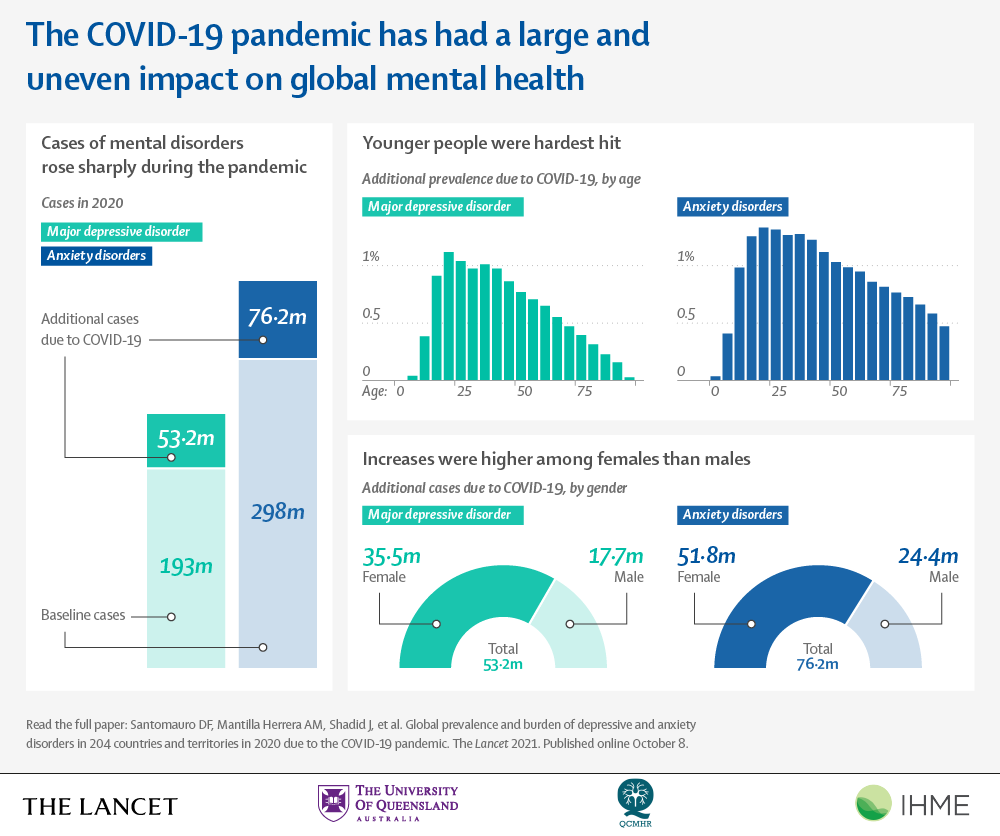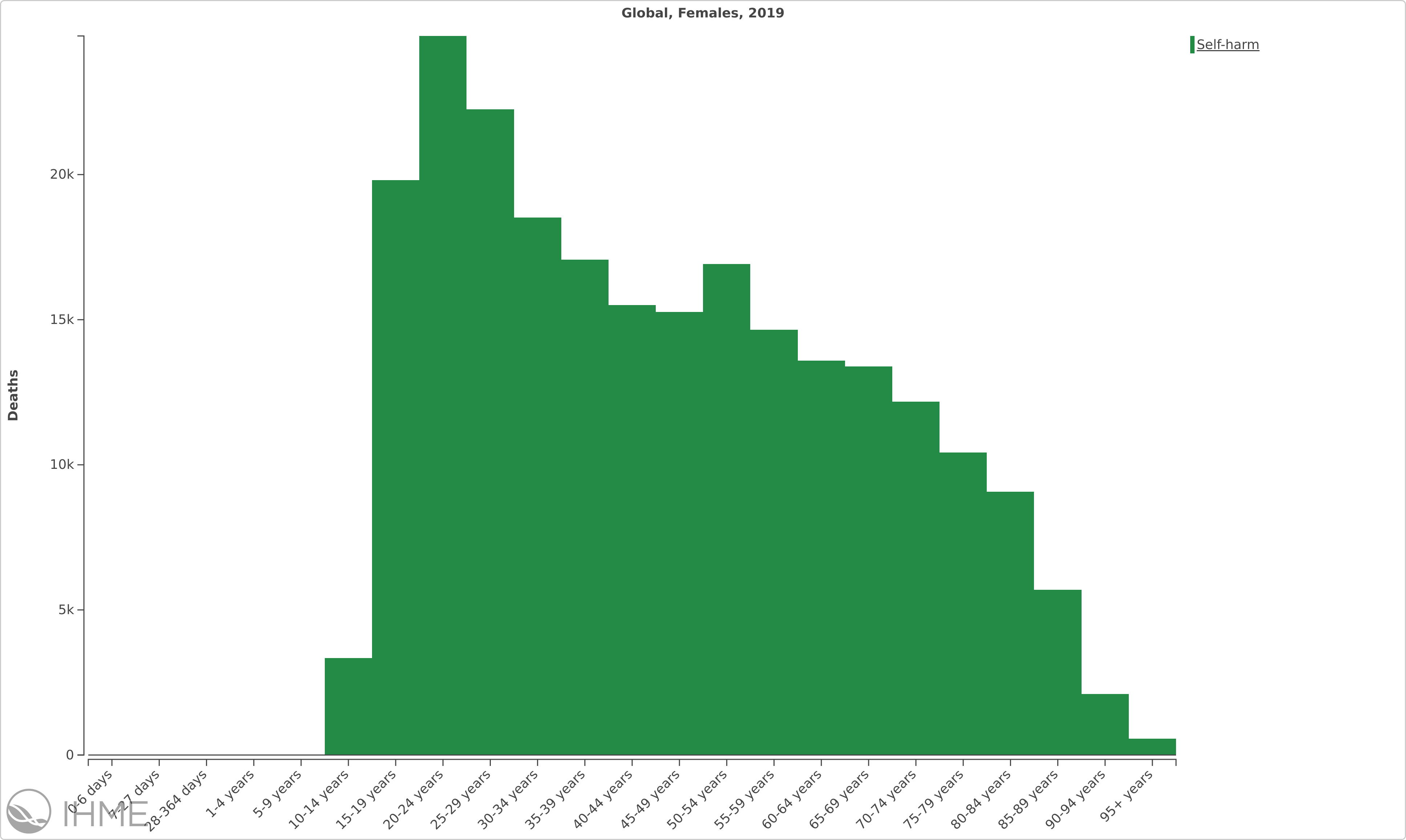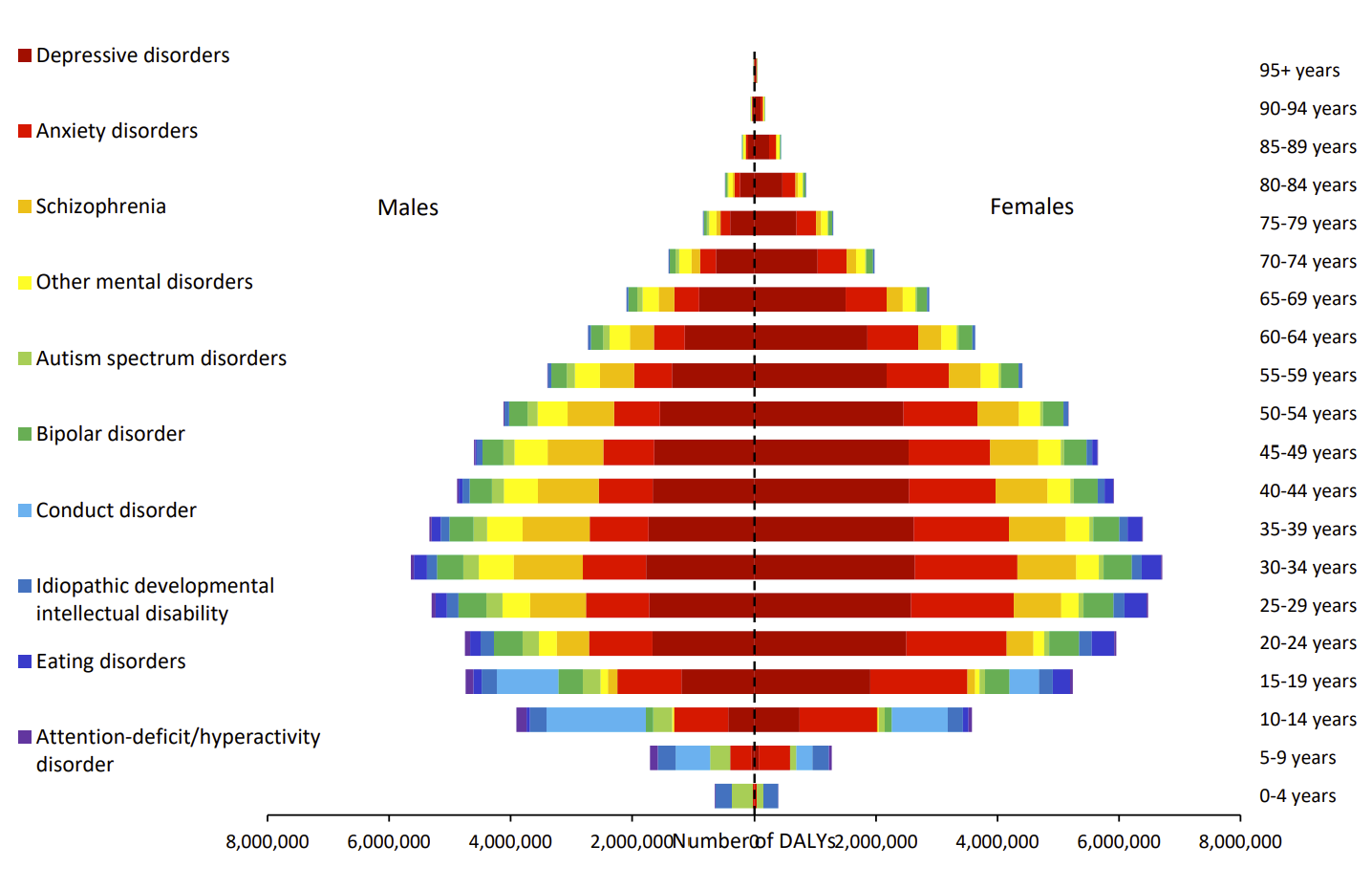**Content Warning**
This post discusses suicide and some people might find it disturbing. If you or someone you know is suicidal, please, contact your physician, visit your local ER, or call the suicide prevention hotline in your location.
For the US, the numbers are as follows: The National Suicide Prevention Lifeline at 800-273-TALK (8255), or message the Crisis Text Line at 741741.
Both numbers are free, confidential, and available 24/7.
As we near the third year of the COVID-19 pandemic, a noticeable and disproportionate increase in the global burden of depressive and anxiety disorders has impacted the mental health of women and children worldwide. According to a new analysis published in The Lancet showing that the COVID-19 pandemic led to a stark rise in depressive and anxiety disorders globally in 2020, the overall number of cases of mental disorders rose dramatically, with an additional 53.2 million and 76.2 million cases of anxiety and major depressive disorders (MDD), respectively.

The study assessed the global impact of the pandemic on anxiety disorders and MDD and quantified the prevalence and burden of the disorders by age, sex, and location in 204 countries and territories, noting that the increase in the prevalence of anxiety disorders and MDD during 2020 was associated with both the increasing COVID-19 infection rates and decreasing human mobility. The COVID-19 impact indicators incorporated the combined impacts of the spread of the virus, lockdowns, stay-at-home orders, decreased public transportation, school, and business closures, and decreased social interactions, among others. Globally, anxiety disorders prevalence was strongly associated with increased infection rates, while MDD prevalence was more associated with decreasing human mobility. Those whose mental health was most affected by these indicators are women and children.
Among women, there were almost 52 million additional cases of anxiety disorders and more than 35 million additional MDD cases present in 2020, compared to 2019. Mental disorders were anticipated to have a greater impact on females as they are more likely impacted by the social and economic consequences of the pandemic, specifically as challenges like school closures and illness disproportionately required women—especially those who were more likely to be financially disadvantaged during the pandemic due to lower salaries and savings than their male counterparts—to fill the role of caretaker. This comes as no shock, as females generally are more susceptible to depression and anxiety disorders compared to males, with susceptibility starting before the age of 15. It is not uncommon for adolescents to be diagnosed with mental disorders: 1 in 7 adolescents aged 10 to 19 years are currently diagnosed globally, according to UNICEF.
Self-harm deaths in women globally in 2019, GBD 2019

Younger people were more affected by major depressive disorder and anxiety disorders in 2020 than older age groups. The additional prevalence of these disorders peaked among those aged 20-24 years (1,118 additional cases of major depressive disorder per 100,000 and 1,331 additional cases of anxiety disorders per 100,000) and declined with increasing age. According to the Global Burden of Disease 2019, self-inflicted injuries are a main cause of death worldwide in adolescent girls, and suicide is the leading cause of death for girls and women between 15 and 19 globally; 46,000 adolescents die from suicide each year, a top 5 cause of death in their age group. Complemented by the challenges of the pandemic, 1 in 7 children have been directly affected by the lockdown, and 1.6 billion children have suffered a loss of education from being fully or partially out of school in 2020. With school closures and wider social restrictions in place, young people’s ability to learn and interact with their peers has been hindered.
Furthermore, youth are more likely to become unemployed during and following economic crises, as mental health disorders directly impact lost contributions to economies at nearly $390 billion a year. Despite the economic loss, 2% of government health budgets are allocated to mental health spending globally, according to UNICEF. The greater impact among women and young people was likely because they are more impacted by the social and economic consequences of the pandemic, which has created a greater urgency to strengthen mental health systems through policy-based methods of action that address the burden of anxiety disorders and MDD globally.
Even before the COVID-19 pandemic, mental health disorders posed a significant burden worldwide. In 2019, depression was the second-leading cause of disability globally, and anxiety ranked eighth, both being the most common types of mental health disorders.
While men and women experienced similar rates of mental health disorders overall, depressive, anxiety and eating disorders were more common in women, while ADHD and autism spectrum disorders were more common in men.
Global disability-adjusted life-years (DALYs) by mental disorder, sex, and age in 2019

Health loss due to mental health disorders tends to peak between ages 25 and 34, increasing during childhood and adolescence and decreasing steadily into older ages. In 2019, this translated into over 80% of the burden of mental health disorders falling on those between 16 and 65 years, which are primary working ages.
Overall, the highest prevalence of mental health disorders was in the regions of Australasia, Tropical Latin America, and high-income North America. However, when looking only at depressive disorders, sub-Saharan Africa, North Africa, and the Middle East all stood out for high levels. For low-income countries that may lack funding or other resources for health infrastructure, it can be particularly challenging to address mental health needs as they are often overlooked. In addition to shortages of mental health services, other barriers can prevent people from receiving treatment, like social stigma or their own perceived need.
Despite policies aimed at reducing mental health disorders, not much has changed in the past two decades at the global level. Since 1990, the age-standardized rate of health loss has stayed roughly the same, and the total amount has increased by about 55%, a result of rising population size. The demand for mental health services has never been greater, and it is imperative that countries do not neglect this demand as they work to enhance public health services.
Mental health is a human right, and people in all countries, at all income levels deserve access to treatment and prevention resources.
Research Articles
Press Release
The Lancet: COVID-19 pandemic led to stark rise in depressive and anxiety disorders globally in 2020, with women and younger people most affected.
Infographic
The COVID-19 pandemic has had a large and uneven impact on global mental health
Videos